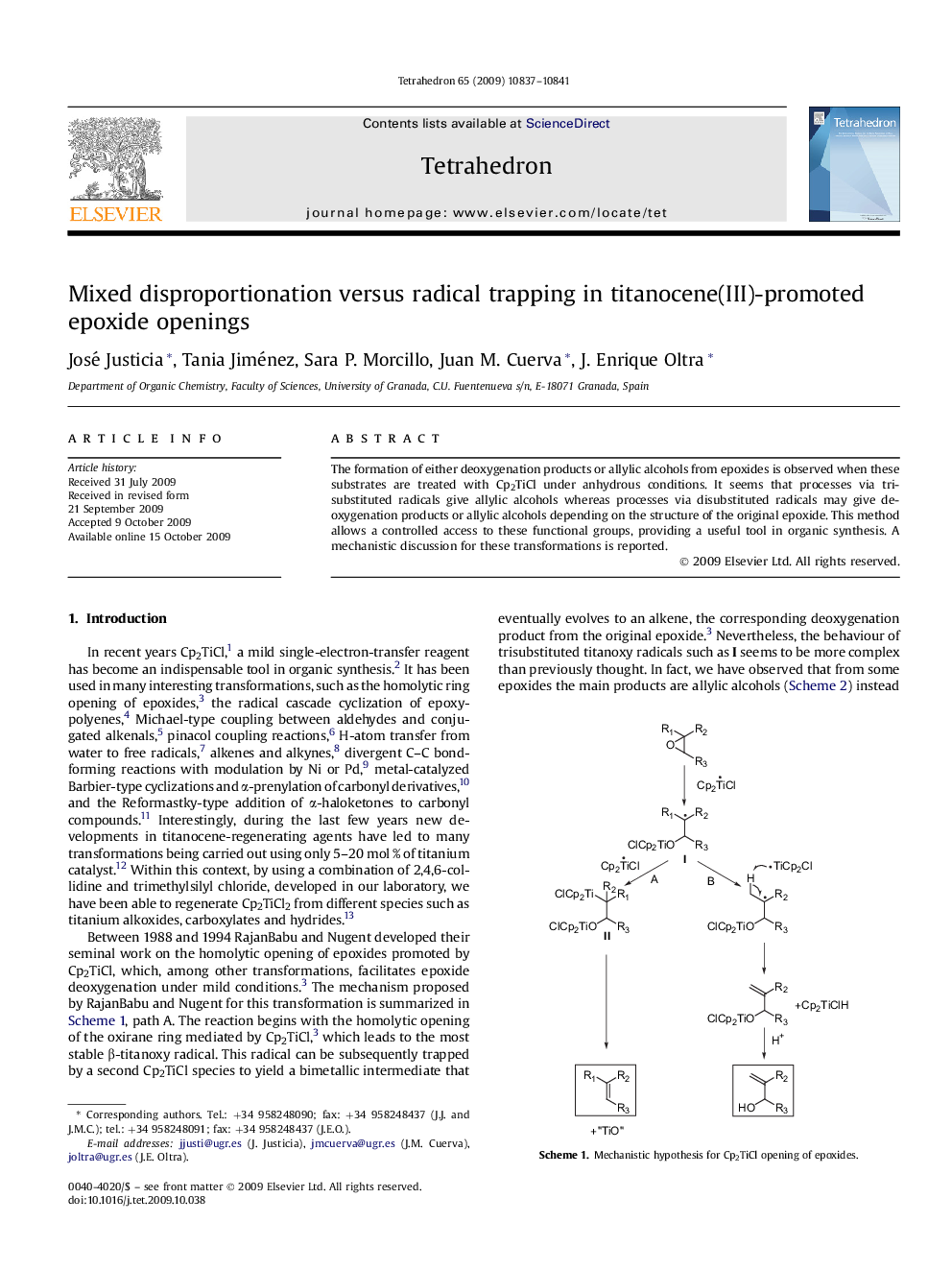| Article ID | Journal | Published Year | Pages | File Type |
|---|---|---|---|---|
| 5222004 | Tetrahedron | 2009 | 5 Pages |
Abstract
The formation of either deoxygenation products or allylic alcohols from epoxides is observed when these substrates are treated with Cp2TiCl under anhydrous conditions. It seems that processes via trisubstituted radicals give allylic alcohols whereas processes via disubstituted radicals may give deoxygenation products or allylic alcohols depending on the structure of the original epoxide. This method allows a controlled access to these functional groups, providing a useful tool in organic synthesis. A mechanistic discussion for these transformations is reported.
Graphical abstractDownload full-size image
Related Topics
Physical Sciences and Engineering
Chemistry
Organic Chemistry
Authors
José Justicia, Tania Jiménez, Sara P. Morcillo, Juan M. Cuerva, J. Enrique Oltra,
